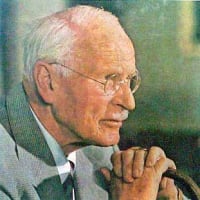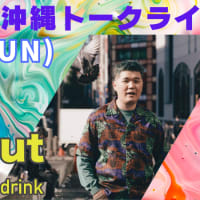アクティブ・イマジネーションを行うことと、トラウマ反応として解離することには関連性がありますか?解離して今を意識していない結果、多くの無意識の内容が出てきて、このルートでそれに関与することもあると思います...。
Is there a connection between doing an Active Imagination and dissociating as a trauma reaction? I find that as a result of dissociation and not being conscious in the present moment, a lot of unconscious content can come up and one can even engage in it through this route...
A
"以下に述べる「能動的想像法」の方法は、いわば意識の閾値のすぐ下にある無意識の内容を生み出すための最も重要な補助手段であり、それが強化されると、意識の中に自然に入ってくる可能性が最も高くなる。そのため、この方法には危険がつきものであり、できれば専門家の監督下でなければ採用すべきではありません。なぜなら、フロイトの言ういわゆる「自由連想」に簡単に移行してしまい、患者は自分自身のコンプレックスの不毛な輪の中に巻き込まれてしまい、いずれにしてもそこから抜け出すことができないからである。さらに危険なのは、それ自体は無害なのだが、本物のコンテンツが作られても、患者がそれに対してもっぱら美的な関心を示し、結果的にすべてを包み込むようなファンタスマゴリア((走馬灯のように)
最後に、3つ目の危険性として、ある状況下では非常に深刻な問題となる可能性があります。サブリミナルな内容がすでに高いエネルギーを持っているため、活発な想像力によってその出口が与えられると、意識的な心を圧倒し、人格を支配してしまう可能性があります。これは、少なくとも一時的には、統合失調症とは容易に区別できない状態をもたらし、真の「精神病的な間隔」につながる可能性もあります。したがって、能動的想像力の方法は、子供の遊び道具ではありません。無意識に対する一般的な過小評価が、この方法の危険性を大きく高めている。"
~CGユング、CW8、超越的機能、序文。
A
“The method of “active imagination,” hereinafter described, is the most important auxiliary for the production of those contents of the unconscious which lie, as it were, immediately below the threshold of consciousness and, when intensified, are the most likely to irrupt spontaneously into the conscious mind. The method, therefore, is not without its dangers and should, if possible, not be employed except under expert supervision. One of the lesser dangers is that the procedure may not lead to any positive result, since it easily passes over into the so-called “free association” of Freud, whereupon the patient gets caught in the sterile circle of his own complexes, from which he is in any case unable to escape. A further danger, in itself harmless, is that, though authentic contents may be produced, the patient evinces an exclusively aesthetic interest in them and consequently remains stuck in an all-enveloping phantasmagoria, so that once more nothing is gained. The meaning and value of these fantasies are revealed only through their integration into the personality as a whole—that is to say, at the moment when one is confronted not only with what they mean but also with their moral demands.
Finally, a third danger—and this may in certain circumstances be a very serious matter—is that the subliminal contents already possess such a high energy charge that, when afforded an outlet by active imagination, they may overpower the conscious mind and take possession of the personality. This gives rise to a condition which—temporarily, at least—cannot easily be distinguished from schizophrenia, and may even lead to a genuine “psychotic interval.” The method of active imagination, therefore, is not a plaything for children. The prevailing undervaluation of the unconscious adds considerably to the dangers of this method."
~CG Jung, CW 8, The Transcendent Function, Prefatory Note.



















